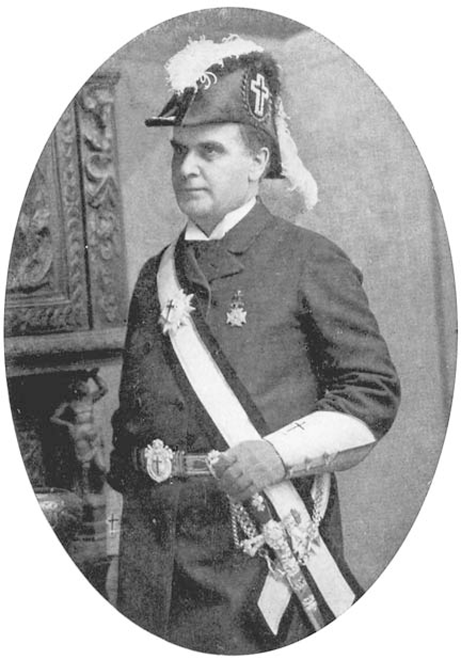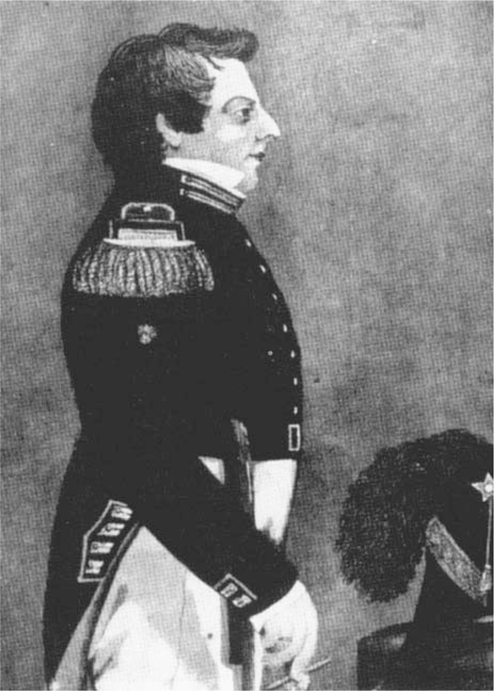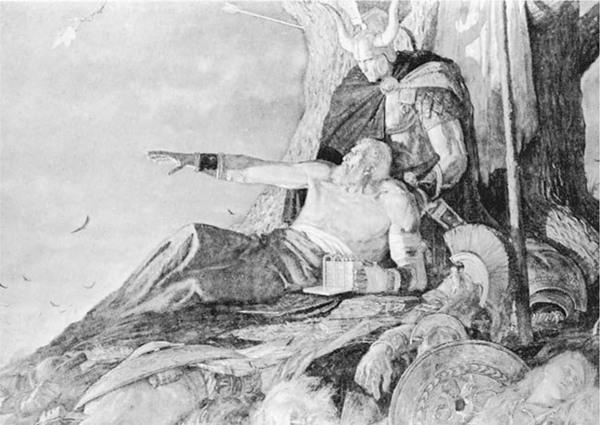
THE “AMERICANNESS” OF MORMONISM
The Mormon people teach the American religion.
MORMON HISTORY is as much a battle over America as the religion was.1 Critics accused the church of un-American activities. Alexander Campbell, E. D. Howe, John C. Bennett, Pomeroy Tucker, and Orasmus Turner all emphasize the heterodox nature of Mormon beliefs and practices in relation to the Republican, Evangelical mainstream.2 The Mormon response, spearheaded by Parley P. Pratt and John Corrill and even the Prophet’s mother, Lucy Mack Smith, defended the faith as both Republican and biblical in the main.3 Smith’s official account of his early religious experiences, The History of the Church, walked a fine line, seeming to locate the early church on the side of American Protestantism.4
Once Mormonism had removed itself safely outside the territorial United States, the level of discussion only appeared to improve. Cultural, historical, and psychological studies attempted to rise above the fray of biblical proof texting and theological warfare. Outsiders like Jules Remy, Julius Brenchley, I. Woodbridge Riley, Eduard Meyer, and Bernard De Voto, and, later, Whitney R. Cross and Thomas O’Dea, even suggested that Mormonism and antebellum America might be less at odds than many first thought.5 Mormons were not slow to reciprocate. Such praise undermined supernaturalism but might be useful to the church in the troubled years following statehood and the protracted end of polygamy.6 Bernard De Voto and Fawn Brodie, despite their critical tone and largely because of their naturalism, paved the way for a commanding pro-American interpretation of Mormonism, almost to the exclusion of the religion’s alleged un-American activities.7
Hansen attempted to balance the books, revisiting the issue of the revolutionary agenda of the turbulent Nauvoo period, the Council of Fifty, Smith’s religious and political ambitions, and whether he broke any cardinal rules regarding the separation of church and state. Hansen’s nuanced discussion was followed by a slate of conflicting interpretations. Hansen argued for reform by means of political conquest.8 Hill thought the quest for refuge not empire, a sectarian retreat rather than imperialist advance, a more plausible thesis.9 Mario S. DePillis, Jan Shipps, Paul Edwards, and Richard L. Bushman took this one step further, opining that Mormonism was so far removed from the mainstream that it stands alone, a religion in its own right,10 whereas Lawrence Foster, B. Carmon Hardy, and John Brooke showed greater care, not divorcing Mormonism so completely from its natural environment.11
The academy responded with a postmodernist argument that repatriates Mormonism all over again within the notion, popular these days, of the centrality of the periphery. R. Laurence Moore, Nathan O. Hatch, Gordon Wood—to some degree—and Kenneth Winn all offer an argument for continuity on the basis of this literary and philosophical school of thought.12 Hatch explains that “the Mormons used a virtual dictatorship as the means to return power to illiterate men.”13 Moore thinks that incongruities resulted from the Mormon prophet’s realization that the more outrageous his behavior, the more attention he could attract to himself and his movement. Persecution only boosted his self-confidence and banded the Mormon people together. Of the Nauvoo period, Moore writes:
Smith entered Nauvoo with a political welcome and a generous city charter that allowed the Mormons a considerable amount of autonomy. Yet, precisely at that point, he embarked on the course of new departures, introduced in politically maladroit ways, that threatened to destroy everything he had created…. Rather than warding off the persecution of his ideas, Smith’s strategy of secrecy only intensified it and gave total license to the imaginations of those who wrote anti-Mormon propaganda. Smith, therefore, appears to have used secrecy for another reason, as part of his effort to give his followers a sense of distinct identity…. Only after Smith’s assassination was the effectiveness of what he had done apparent.14
ACCORDING TO Winn, Mormons only flirted with a fledgling anti-Republicanism. “Mormons had begun their movement in protest against America’s religious pluralism,” Winn writes, “but now, in the face of persecution, they became its most ardent defenders.” Mormon communitarianism, he explains, posed no serious problems as it merely represented an attempt to reinstate “older communal beliefs and customs” that appealed most to “persons of New England ancestry, the region strongest in that communal tradition.”15

FIGURE 44 Brother William McKinley, Knight Templar and Twice President of the United States
Robert Freke Gould, A Library of Freemasonry (London: John D. Yorston, 1911), 1:228b.
That said, Smith’s presidential campaign and plans to remove the Saints to some distant location (whether Utah, Texas, California, or possibly even Vancouver Island would be decided after his death) may not be quite the contradiction or as problematic as Hansen first thought, the Council of Fifty a Masonic auxiliary rather than a political institution distinct from the church. If understood as Masonic rather than merely political in some vague, nondescript sense, then the Mormon political kingdom would not have been separate from the church in either principle or practice. Early Mormonism did not conflate church and state but rather lodge and state. Moreover, this was perfectly consistent with antebellum political practice. Politics in the antebellum period operated according to an old-boys club of preordained but democratically elected men of Masonic sensibility and standing. (A political party that dared not speak its name?) Smith merely hoped to use his Masonic connections to great advantage as others had done in order to effect some greater public good. DeWitt Clinton, governor of New York and Grand Master, is a case in point.

FIGURE 45 Lieutenant-General Joseph Smith Jr.,
John C. Bennett, History of the Saints (Boston: Leland and Whiting, 1842), reproduced in Fawn M. Brodie, No Man Knows My History: The Life of Joseph Smith the Mormon Prophet (New York: Knopf, 1986).
Smith’s presidential campaign was neither un-American nor ill conceived. As president of the United States, he could instigate a fraternal reclamation scheme at the national level. Should that fail, he had a backup plan, the flight to Utah and thus an achievable Mormon—that is, Masonic—sovereign state within a federal rather than national union of states. Hansen’s thesis, that the Mormon quest for empire (imperium in imperio) was problematic, makes eminent sense in the decades following the Civil War but not before it, when a measure of sovereignty at the state level existed, allowing Mormons to practice their religion with impunity. (Young’s famous telegram to Lincoln at the start of the Civil War, that Utah had not seceded, may have been a threat to leave, too, if it did not get its way, rather than a show of support.) Regardless, the Mormon settlement of Utah can be seen as a Kansas and Nebraska, that bloody struggle between two competing visions for America’s future—free and slave—that Stephen Douglas thought prudent to leave to popular sovereignty. Until such time that the Civil War changed forever the nature of American constitutionalism, redefining the “United” States of America along national rather federal lines in order to avert an endless series of separatist movements,16 Mormonism stood on solid constitutional ground. It did not flee the United States so much as stake out new territory in hope of preserving American Masonry at the state level under the banner of the Mormon-Masonic State of Deseret.
A Masonic interpretation of Mormonism also suggests that polygamy, much as Hansen theorizes, can be seen as the handmaid of the political kingdom. In fact, Mormonism under Young may not have been designed merely to allow Mormons to practice polygamy. The Masonic political kingdom (emphasis on the Masonic rather than political element) can be seen as Mormonism’s carefully guarded secret. Polygamy, again more or less as Hansen says, was a social means to a fraternal political end, that being the establishment of the political kingdom of God on earth. B. Carmon Hardy’s arguments for the centrality of polygamy notwithstanding, a Masonic interpretation of early Mormonism clearly supports Hansen’s initial sense of the question, that polygamy was crucial but not central to early Mormonism.
Congress would take what now seems an extraordinary step, attacking Mormons’ religious liberties. Yet the United States Congress in the nineteenth century may well have understood something that many have since forgotten when they denied Mormonism religious status. Hansen makes a convincing case that what federal authorities hoped to quash was not polygamy but the political kingdom. When Mormons gave Washington what it wanted, promising to end the practice of polygamy in 1890, this was not exactly cause for celebration at the White House—in some important respects, it represented a Mormon victory. What bothered Congress about Mormonism may not have been its politics or Young’s bravado and demagoguery but a strong sense that the so-called American religion was a brand of postrevolutionary Republicanism that had lost the right to self-determination in the great constitutional battle between North and South. Mormonism would be faced with the awful choice not simply of having to give up polygamy to preserve the political kingdom against attack but of having no choice but to give itself over to the reigning Evangelical, Unionist social vision for the future.
That said, there is a sense in which Mormonism (as a Masonic countermovement) can be seen as more European than American. Mormonism’s androgynous temple ceremony or endowment (albeit a shadow of its former self because of the removal of blood oaths of late) has yet to find an equal in the United States. The Order of the Eastern Star, for example, might be described as a separate-but-unequal institution that restricts itself to women of Masonic lineage and sensibility, the ritual in no sense on par with that of their fathers, husbands, or brothers. One may compare this to European and Mormon Masons, who raise their women (mothers, wives, and daughters) according to the same rituals, seeming not fearful in the least that the second sex will faint at the sight of blood (and crossbones). The chief difference between Mormon and European Masonry seems to be the caste or social class of their respective initiates. The androgynous and deeply mystical rituals of French, German, and Russian Masons pandered to the aristocracy—where, in some respects, a greater degree of gender equality existed as a matter of course as the average aristocratic woman did not take no for an answer. Mormonism took the bold step of presuming to offer men and women of lesser birth the same sense of self-importance and moral worth.17
In a sense, it might be said that Mormons teach European Masonry. Mormonism had its greatest missionary successes not in America but in Great Britain. Most of those who traveled by wagon train or handcart to the Utah desert to build the kingdom of God on earth were British and Scandinavian converts. Americans who joined in the initial decades were often more trouble than they were worth, rejecting polygamy and anything adoptive or egalitarian that followed (such as the vicarious work for the dead). They were, in short, Americans, not pioneers—and certainly not Europeans. The Indians—for whom the book and religion had been created—were all too American, it seemed, the mission to the Lamanites also falling on deaf ears. The Book of Mormon suggests that polygamy was never meant to be a white-on-white affair but to include all of America, that is, white on red and black. Why the original hope of a white race of reconstituted Nephites failed to materialize may have something to do with Mormonism’s European bent as America’s premier androgynous rite—still in a class all its own. And so the restored gospel of the Mormon Rite or Endowment would be preached to the ends of the earth, where it stood a greater chance of being received with an open heart.

FIGURE 46 Arnold Friberg, Mormon Bids Farewell to a Once Great Nation
The Book of Mormon, large ed. (1957; reprint, Salt Lake City: Deseret, 1966).
One presumes that the intention of the missionaries was merely to Americanize not only unsuspecting women like Fanny but men, too, using the American wilderness to test their mettle before broaching the subject of the temple and polygamy. Any woman who survived the trek across the plains was more than equal to the symbolic blood and carnage of the temple and the ensuing heartache of polygamous cohabitation. The Mormon Masonic State of Deseret aspired to be an enclave of European Masons, in mind, spirit, and, most of all, body. Unlike the bulk of Europeans to come to America, Mormon converts were brought over not to be Americanized but the reverse—to be the biological agent in the Mormon-Masonic quest for European empire. Then again, was this not essentially the hope of the founding fathers: to create a republic of cosmopolitan Masons or Europeans? And so we come back to the original question of the Americanness of Mormonism as one of timing and perspective. Among the most daring and radical of America’s antebellum knights in shining armor and defenders of the beleaguered patriarchal order of priesthood, Mormonism would live out the original Templar fantasies of its founding fathers to the bitter end, outnumbered by a latter-day Lamanite army of Evangelical soldiers for Christ (and betrayed by an unholy alliance of state and church in the 1890s), they must await the appearance of their Messiah to deliver them from the Saracen dungeons of the Great Basin and the American way.